Tire News & Information
Free shipping
Best price guarantee
Special pricing
Financing with Resolve
Easy returns
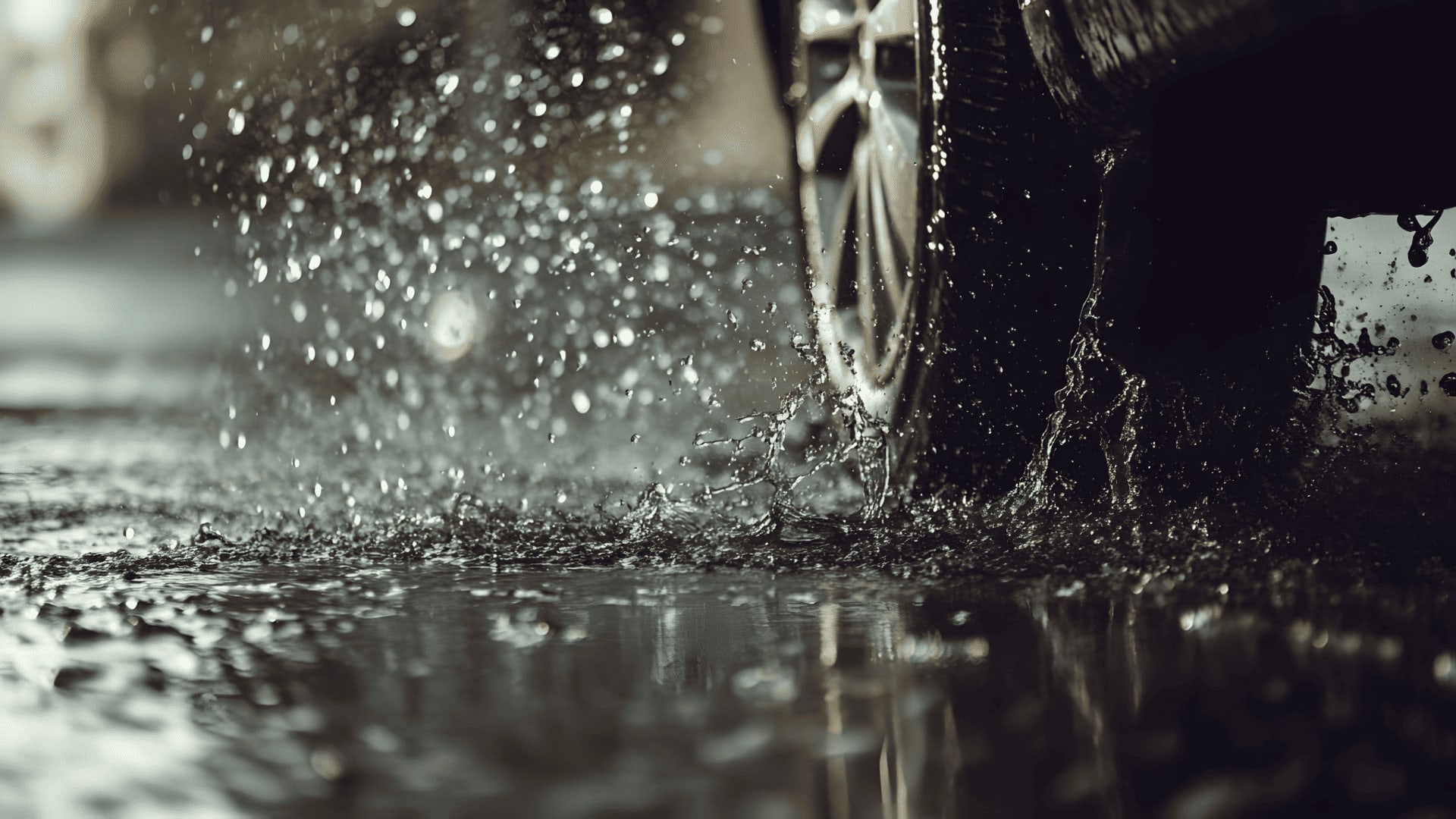
Wet roads transform your daily commute into a test of both driver skill and tire performance. Every year, rain contributes to over 70% of weather-related crashes, making tire selection one of the most important safety decisions you'll make for your vehicle.
Modern tire technology has evolved dramatically to combat wet-weather challenges. Today's tires feature advanced rubber compounds and sophisticated tread designs that channel water away from the contact patch, maintaining grip when roads turn slick.
The difference between average tires and those engineered for wet conditions can mean stopping 20 feet shorter in an emergency. Understanding what separates great rain tires from merely adequate ones helps protect both your investment and your safety.
What Makes a Tire Great for Wet Weather?
Tread Design Features
The foundation of exceptional wet weather performance starts with how a tire moves water away from its contact patch. Deep grooves and wide channels act as highways for water evacuation — the deeper and wider these channels, the more water they can displace per second. Premium wet-weather tires typically feature grooves measuring 8/32" to 11/32" deep when new, significantly deeper than standard all-season tires.
Sipes represent another critical design element: these thin slits cut into tread blocks create thousands of biting edges that grip wet pavement. Modern 3D sipes lock together under pressure to maintain tread block stability while multiplying grip points on slippery surfaces. V-shaped and directional tread patterns excel at funneling water outward from the center of the tire, with some designs capable of evacuating up to 30 gallons of water per second at highway speeds.
The amount of rubber touching the road — known as the contact patch — requires careful optimization for wet conditions. While race slicks maximize dry grip with maximum rubber contact, wet weather tires balance void space for water evacuation with sufficient rubber to maintain traction. Leading tire manufacturers achieve this through asymmetric designs that place larger tread blocks on the outside shoulder for cornering stability while maintaining aggressive siping and channeling on the inner portions.
Important Safety Technology
Silica-enhanced tread compounds represent one of the most significant advances in wet-weather tire technology. Unlike traditional carbon black compounds that stiffen in cold or wet conditions, silica-infused rubber maintains flexibility across a broader temperature range. This flexibility allows the tire to conform to microscopic road irregularities, maintaining grip even on smooth, rain-slicked surfaces. Michelin's latest compounds, for example, incorporate up to 30% silica content, dramatically improving wet braking distances.
Hydroplaning resistance comes from multiple design elements working in concert:
- Circumferential grooves: Wide channels running around the tire's circumference provide primary water evacuation
- Lateral notches: Cross-grooves help move water sideways and out from under the tire
- Optimized void ratio: The percentage of groove area versus rubber contact area, typically 25-35% for wet-optimized tires
- Variable pitch tread blocks: Different-sized blocks break up standing water more effectively
These technologies combine to deliver measurable safety improvements. Top-tier wet weather tires can reduce stopping distances from 60 mph by 15-25 feet compared to worn or inadequate tires — often the difference between a close call and a collision. Steering response also improves dramatically, with premium wet-weather tires maintaining precise feedback and control even when encountering standing water that would cause lesser tires to float and wander.
Temperature-stable compounds ensure consistent performance whether facing spring showers at 70°F or autumn storms at 40°F. This consistency proves especially valuable in regions with variable weather patterns where a morning commute might start dry and warm but end in a cold downpour. Advanced polymer chains in modern compounds resist both heat buildup at highway speeds and maintain pliability in cooler conditions, delivering predictable handling regardless of conditions.
Top 5 Tires for Wet Weather
Here are the best 5 tires for wet weather:
1. Bridgestone Turanza QuietTrack
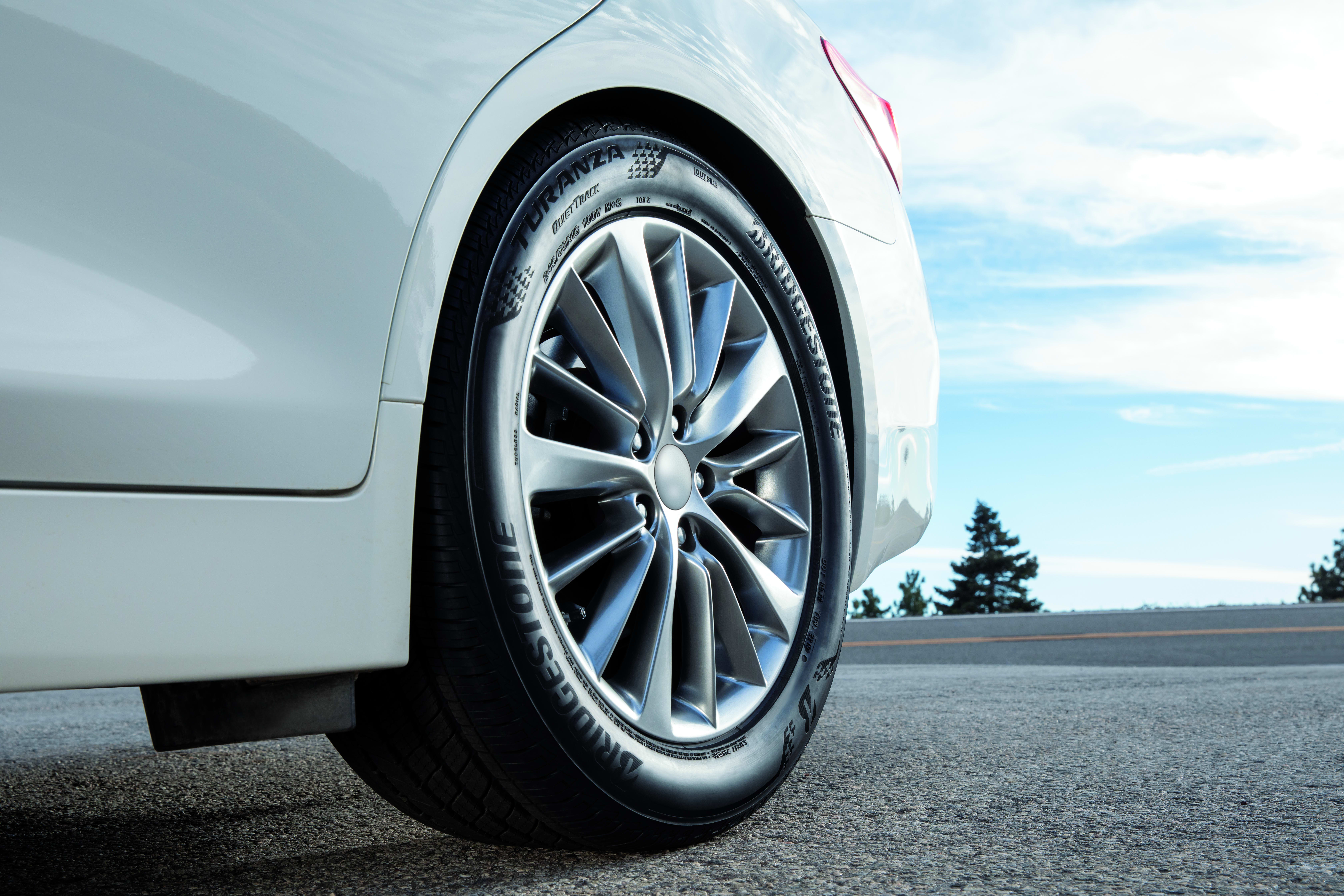
The Bridgestone Turanza QuietTrack is an excellent all-season tire that offers superior control of noise and vibration levels while delivering incredible performance year-round in different driving conditions. With an outstanding 9.2 overall SimpleScore, the Bridgestone tire is backed by a superb 80,000 mile limited manufacturer tread life warranty, ensuring exceptional longevity. For quick water evacuation, it features Hydro-Track Technology and full-depth sipes that provide reliable grip and superior stability in wet and light wintry conditions. Covered by Bridgestone's 90-Day Buy and Try Guarantee (certain terms and conditions apply), the Turanza QuietTrack is tagged at a starting price of $133 onwards.
Get Bridgestone Turanza QuietTrack tires at the best deals for your vehicle here
2. Pirelli Cinturato Weatheractive
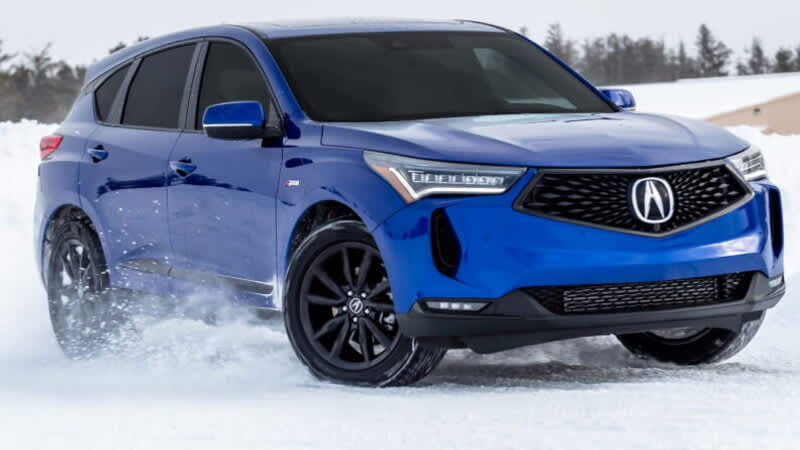
Maybe you need more effective control and grip on wet and snowy surfaces. Consider a premium all-weather tire like the Pirelli Cinturato Weatheractive that offers superior grip, control, stability, and steering response in moderate to severe winter conditions while providing great year-round performance. The tire features "trumpet-shaped" lateral grooves to enhance water and slush evacuation, ensuring safety and comfort throughout the year. With an exceptional 9.5 overall SimpleScore, the Pirelli all-weather tire is Three Peak Mountain Snowflake certified for severe winter conditions and is backed by a superb 60,000 mile limited manufacturer tread life warranty. The Cinturato Weatheractive’s innovative rubber compound and directional tread pattern deliver outstanding traction and stability on dry, wet, and snowy roads. It starts at a price tag of $147.
Get Pirelli Cinturato Weatheractive tires at the best deals for your vehicle here
3. General Altimax RT45
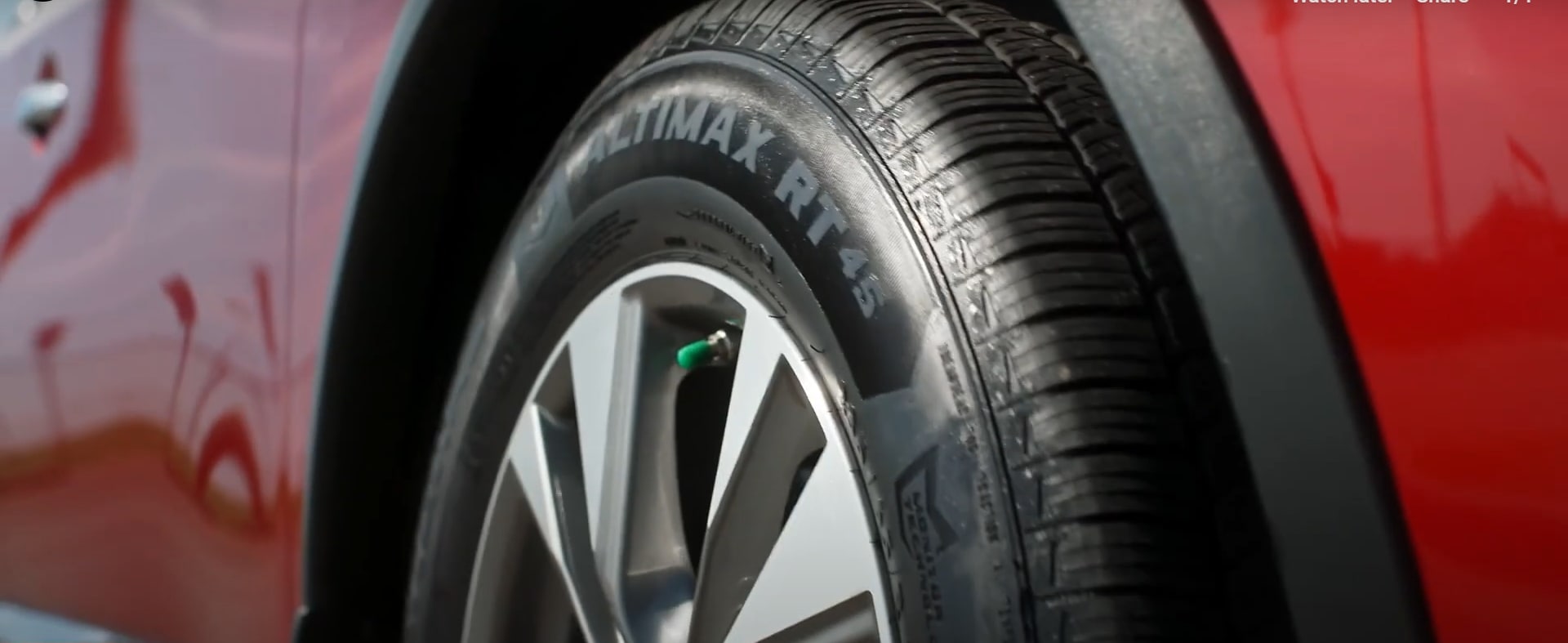
Looking for a more cost-effective tire option to sail you through the rainy season? Check out the General Altimax RT45, a high-mileage all-season tire that impresses with its superb service life and scores an 8.9 in its overall SimpleSCore. It features wide grooves that flush out water and slush out of the tread for effective grip and traction in wet and snow conditions. Backed by a 75,000 mile limited manufacturer tread life warranty, the Altimax RT45 features dense siping and wide grooves for consistent traction in dry, wet, and light snow. The inbuilt Replacement Tire Monitor and Visual Alignment Indicators provide alerts to drivers to maximize wear life and ensure long-term value. The General Altimax RT45 is reasonably priced at $100 per tire onwards.
Get General Altimax RT45 tires at the best deals for your vehicle here
4. Yokohama Avid Ascend LX
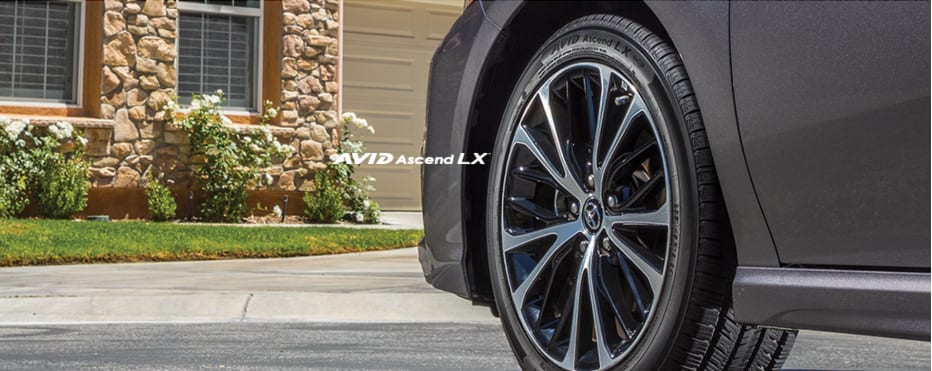
Another great all-season tire option is the Yokohama Avid Ascend LX. With a starting price of $125 per tire, the Yokohama all-season tire is built for the long haul, backed by an exceptional 85,000 mile limited manufacturer tread life warranty. Boasting a superior 9.0 in its overall SimpleScore, the Avid Ascend LX’s advanced L-2 rubber compound ensures long, even wear and reliable grip in wet conditions. The multi-pitch tread design works to significantly reduce pattern noise, delivering an exceptionally quiet and comfortable ride. Thanks to the special polymer blend rubber compound and wide, flat profile, the Yokohama tire limits irregular wear and promotes a longer tread life. The Avid Ascend LX’s price starts at $125 per tire.
Get Yokohama Avid Ascend LX tires at the best deals for your vehicle here
5. GT Radial Maxtour LX
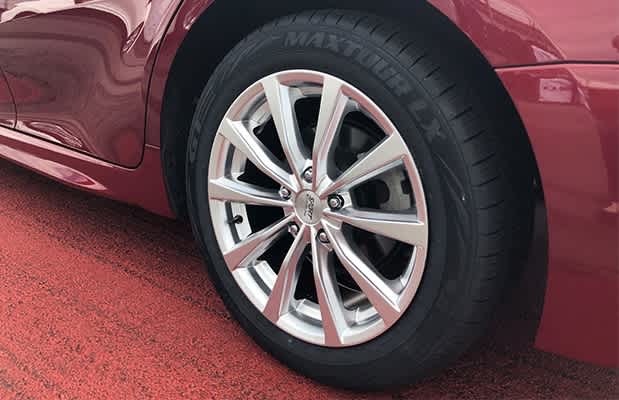
Maybe you need a reliable all-season tire without breaking the bank. The GT Radial Maxtour LX is a cost-effective touring tire that offers a longer tread life and a comfortable ride quality. With an 8.5 overall SimpleScore, the Maxtour LX is backed by a 70,000 mile limited manufacturer tread life warranty and achieves an exceptional 9.3 in longevity. While the asymmetric tread and harmonically optimized pitch sequencing reduce road noise and vibrations, the full-depth sipes and stiff outer tread blocks of the GT Radial tire ensure consistent year-round grip, traction, and precise handling. The GT Radial Maxtour LX price starts at $69 per tire.
Get GT Radial Maxtour LX tires at the best deals for your vehicle here
Understanding Wet Weather Tire Ratings
How We Test Tires for Rain
Evaluating tires for rainy conditions involves detailed assessments. Wet braking tests determine how effectively a tire can halt a vehicle from 60 mph on slick surfaces, highlighting crucial stopping capabilities.
For cornering grip, tires navigate wet tracks at varying speeds to assess stability and control during sharp turns. These tests showcase a tire's ability to maintain traction and manage sudden movements. Hydroplaning resistance examines how efficiently a tire channels water away to maintain road contact, ensuring safety at multiple speeds.
Real-world driving tests simulate daily conditions, assessing tire performance in different rain scenarios, from light showers to heavy storms. This provides valuable insights into how tires handle diverse situations on the road.
What the Numbers Mean
Deciphering tire ratings is vital for informed decisions. Treadwear ratings indicate durability — higher numbers suggest longer life expectancy. For example, a treadwear rating of 600 typically lasts longer than a 300 rating.
Traction grades, ranging from AA to C, evaluate a tire's effectiveness in wet stopping scenarios. An AA grade reflects superior stopping power, while a C indicates basic capability. These grades help ensure tires meet safety needs.
Temperature ratings, labeled A, B, or C, signify a tire's ability to withstand heat. An A rating denotes excellent heat management, crucial for high-speed conditions. The load index specifies the weight a tire can support, with higher numbers indicating greater capacity, important for vehicles with extra load requirements.
Your safety on wet roads depends on making informed tire choices that match your specific driving needs and conditions. Whether you prioritize premium performance, value, or specialized features for your vehicle type, the right wet-weather tires transform rainy drives from stressful to secure. Ready to upgrade your wet-weather safety? Shop for tires online and find the best deals — we make it easy to find the perfect tires for your vehicle and have them delivered right to your door.
Ready to find the perfect tires?
Search By